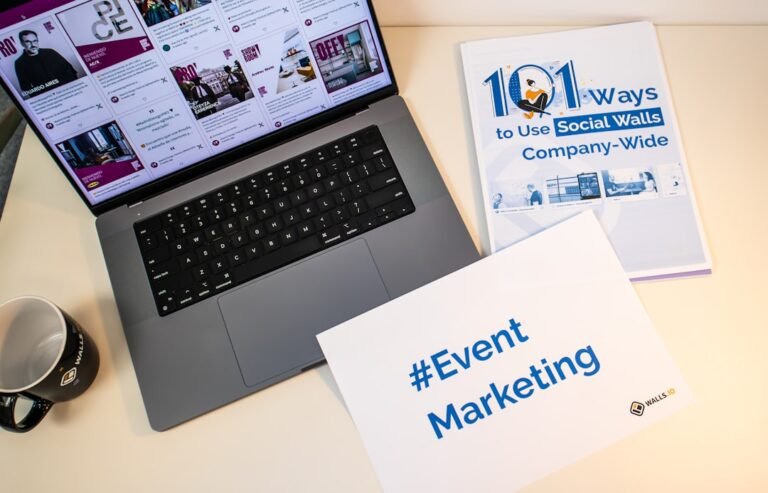marketing automation best practices
In today’s fast-paced digital landscape, marketing automation has become an essential tool for businesses to streamline their marketing efforts, enhance customer engagement, and drive revenue growth. However, with the numerous marketing automation platforms and techniques available, it’s crucial to follow best practices to maximize ROI and achieve desired outcomes. In this article, we’ll explore the top marketing automation best practices to help you optimize your marketing strategy.
Understanding Marketing Automation
Marketing automation refers to the use of software and technology to automate repetitive marketing tasks, such as email marketing, lead generation, and social media management. By automating these tasks, businesses can:
- Save time and resources
- Improve lead quality and conversion rates
- Enhance customer engagement and experience
- Increase revenue and ROI
Marketing Automation Best Practices
1. **Define Clear Goals and Objectives**
Before implementing marketing automation, it’s essential to define clear goals and objectives. This will help you:
- Identify the right automation tools and techniques
- Measure the success of your automation efforts
- Align your marketing strategy with business objectives
Some common marketing automation goals include:
- Lead generation and nurturing
- Customer segmentation and personalization
- Conversion rate optimization
- Customer retention and loyalty
2. **Segment Your Audience**
Segmenting your audience is critical to delivering personalized and relevant marketing messages. By segmenting your audience based on demographics, behavior, and preferences, you can:
- Create targeted and effective marketing campaigns
- Improve lead quality and conversion rates
- Enhance customer engagement and experience
Some common segmentation criteria include:
- Demographics (age, location, job title, etc.)
- Behavior (website activity, purchase history, etc.)
- Preferences (interests, communication channels, etc.)
3. **Choose the Right Automation Tools**
With numerous marketing automation platforms available, choosing the right tool can be overwhelming. When selecting an automation tool, consider:
- Ease of use and integration with existing systems
- Features and functionality (email marketing, lead scoring, etc.)
- Scalability and customization options
- Customer support and training
Some popular marketing automation platforms include:
- Marketo
- Pardot
- HubSpot
- Mailchimp
4. **Develop a Lead Scoring System**
Lead scoring is a critical component of marketing automation. By assigning scores to leads based on their behavior and demographics, you can:
- Identify high-quality leads and prioritize follow-up
- Nurture leads through targeted marketing campaigns
- Improve conversion rates and sales
Some common lead scoring criteria include:
- Website activity (page visits, form submissions, etc.)
- Email engagement (opens, clicks, etc.)
- Social media engagement (likes, shares, etc.)
5. **Personalize Your Marketing Messages**
Personalization is key to delivering effective marketing messages. By using data and analytics, you can:
- Create targeted and relevant marketing campaigns
- Improve lead engagement and conversion rates
- Enhance customer experience and loyalty
Some common personalization techniques include:
- Using customer names and preferences
- Tailoring content and offers based on demographics and behavior
- Using dynamic content and subject lines
6. **Monitor and Optimize Your Automation Efforts**
Finally, it’s essential to monitor and optimize your marketing automation efforts regularly. By tracking key metrics and analyzing performance data, you can:
- Identify areas for improvement and optimization
- Refine your marketing strategy and tactics
- Maximize ROI and achieve desired outcomes
Some common metrics to track include:
- Open rates and click-through rates
- Conversion rates and lead quality
- Customer engagement and satisfaction
Conclusion
Marketing automation is a powerful tool for businesses to streamline their marketing efforts, enhance customer engagement, and drive revenue growth. By following these marketing automation best practices, you can:
- Define clear goals and objectives
- Segment your audience and personalize marketing messages
- Choose the right automation tools and techniques
- Develop a lead scoring system and nurture leads
- Monitor and optimize your automation efforts
By implementing these best practices, you’ll be well on your way to maximizing the potential of marketing automation and achieving your business goals.
About Relvixis: Relvixis is a Canadian-based digital agency specializing in results-driven solutions for businesses looking to grow online.
We offer expert services in SEO optimization, web development, social media management, and marketing automation.
Our team blends creative strategy with technical precision to drive leads, enhance brand visibility, and accelerate digital performance.
To learn more or schedule a free consultation, visit
relvixis.com.







